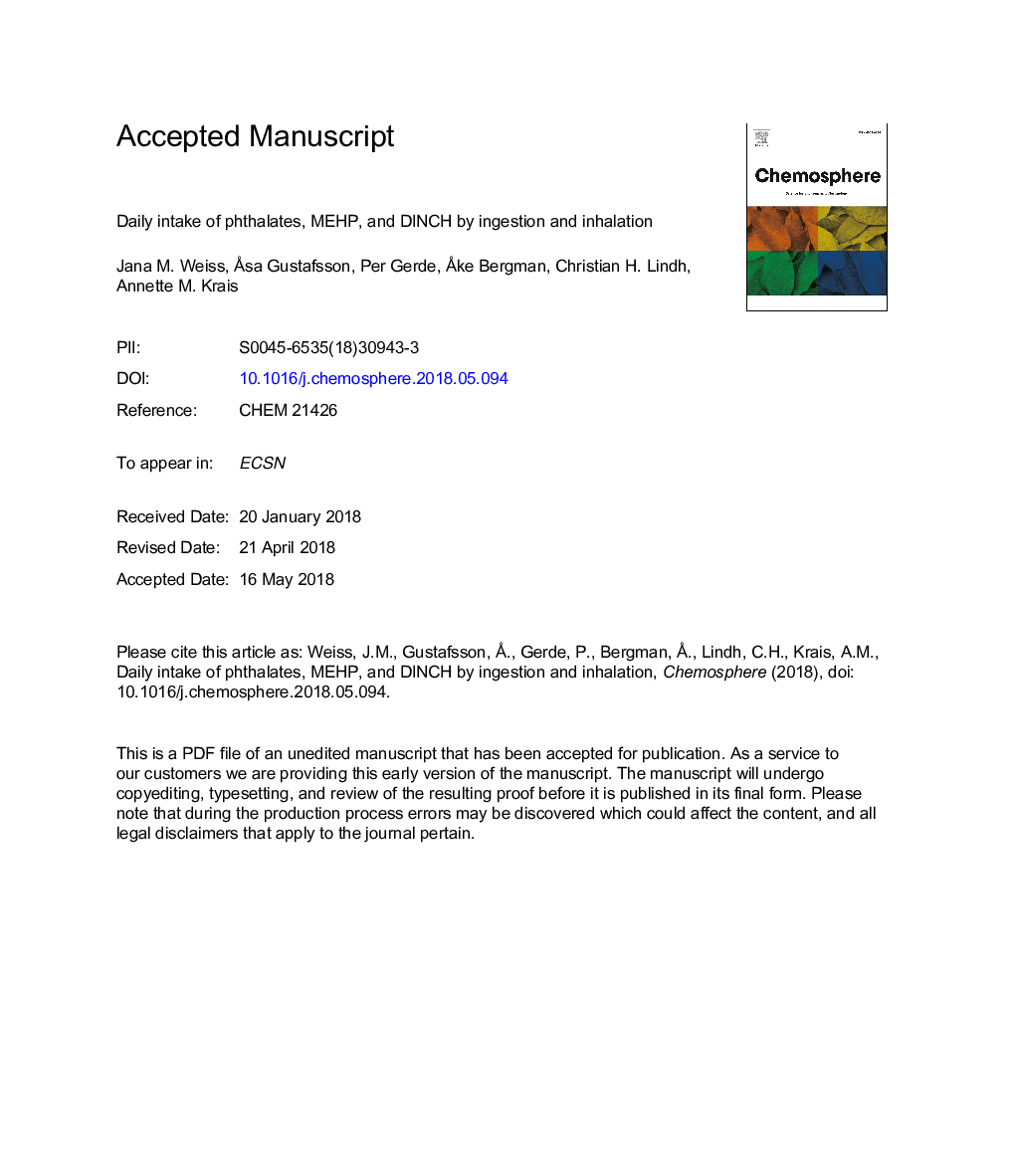| Article ID | Journal | Published Year | Pages | File Type |
|---|---|---|---|---|
| 8850721 | Chemosphere | 2018 | 43 Pages |
Abstract
This study investigates household dust as an exposure pathway for seven phthalate esters, the monoester MEHP, and the plasticizer DINCH. Household dust collected from children's sleeping rooms and from living rooms were analysed using gas and liquid chromatography tandem mass spectrometry. To compare two exposure pathways, different dust particle sizes were generated: a respirable fraction (<5â¯Î¼m) and an ingested particle fraction in the anticipated size range of skin adherence (<75â¯Î¼m). Modelling of dust inhalation and ingestion showed that the daily intake of dust-bound phthalate esters was likely to be 2 times (inhalation) to 12 times (ingestion) higher for 21-month-old children than for adults. These children's daily uptake of phthalate esters was 40-140 times higher through ingestion than inhalation. Furthermore, dust may be an exposure pathway for phthalate esters as well as for MEHP. Therefore, phthalate monoesters could be environmental contaminants of their own and need to be considered in health risk assessments.
Keywords
MMADMEHPTDIdi-n-butyl phthalatedi-iso-nonyl phthalateDiDPDPHPDEHPBBzPDnBPDIBPDEPBrunauer-Emmett-TellerGSDLOQDiNPmono(2-ethylhexyl) phthalateIndoor pollutionPhthalate estersgeometric standard deviationbenzylbutyl phthalatebis(2-ethylhexyl) phthalateLOD یا Limit of detectionDiethyl phthalatedi-iso-butyl phthalateCoefficient of VariationMass median aerodynamic diameterlimit of quantificationlimit of detectionIndoor environmentSEMTolerable daily intakePhthalate monoestersScanning electron microscopyHousehold dust
Related Topics
Life Sciences
Environmental Science
Environmental Chemistry
Authors
Jana M. Weiss, Ã
sa Gustafsson, Per Gerde, Ã
ke Bergman, Christian H. Lindh, Annette M. Krais,
